This shoot is definitely my favourite out of the past shoots i have done as i fixed the ISO which meant none of the photos which i took were pixelated. During this shoot i also took landscapes which i could use in my book to separate the portraits. I am not the most skilled at taking landscapes as i never know what looks good and what does not. The landscapes at Noimont are very natural and untouched by modern buildings and technology, this makes me very plain landscapes which i thought didn’t look especially amazing in colour but they look very powerful in black and white specially if combined with other powerful portraits which i have created both in the studio and in the environment. I think what is powerful about these images when in black and white is that the horizon almost merges with the sea level creating a never ending path. Also each image has a different sense of depth due to the angle i have taken it at, as the first landscape has many different depths from the wall up close in the corner to the rocks at the bottom far away from the lens. These landscapes symbolize uncontaminated nature, parts of the world which we have not ruined and destroyed to create new buildings for people to work or live in.


I did a shoot on the big gun at Noimont point and the images turned out really well but the sun was very bright which made it difficult to photograph my model without the photos coming out to bright. My male model is very good with body language which is why i think these photos worked really well, as he did what i said but he also added in poses and movements of his own which added variety and a different perspective to my images. These images look very sinister in the sense that it links to the battle fought at Noimont and the lives which were lost there. The mask symbolize the battles which have been fought in the world, the wars which we will fight and the invisible wars which not everyone knows about like pollution. I chose these images to be potentially part of my book as i think they are powerful, they look like a moment in time which has been stopped such as my model trying to get up off the gun, that symbolizes the wars which we will continue to fight no matter what the set backs are, we will continue to fight. However the image of my model reaching out towards the camera symbolizes the need for help, the need for more people to join the fight, the war against pollution. I could see this image being used as a propaganda poster to join the army in WW1. The last image of my model simply sitting on the gun symbolizes the loss of hope, the loss of faith in humanity. It symbolizes giving up as he is slouching with his hands just resting, there’s no sign of a fighting spirit like the other photos. Each image symbolizes something different in my project, they all have different meanings which will come together to link to my theme of pollution. The gas mask is the biggest symbol in my project and in each image it can represent a different struggle.



After this shoot i moved to the bunkers which were open, i decided to photograph my model in the entrance to the armory rooms as it was too dark inside. I did not change the settings on my camera which meant the photos came out dramatic and sharp, it also helped that the sun was not shining directly onto my model or me so it was much easier to photograph and the photos came out dark which added a lot of suspense. These images have a direct link to the war fought in jersey and the wars fought all around the world. All of these images symbolize that no bunker, one of the strongest structures in the world can protect us from pollution, No matter where we hide we will need air to breath and it won’t always be clean. The strongest image of these three is the second image as his eyes are very strong in the image and show a lot of emotion primarily anger but many different people will interpret his emotion differently which makes the image very ambiguous. These image do not directly link to pollution but they symbolize a war, a fight which not many people know about such as most of the people in the world have no clue that Jersey exists just like the war against Pollution. The black and white makes these images really strong, powerful and dramatic, the images need to be like this otherwise they would not stand out and their symbolism would not be so powerful. If i put these images in my book, i will make sure to put text to them to give the viewer an idea of what they could symbolize but leave the rest up to them to image and create an image in their head.
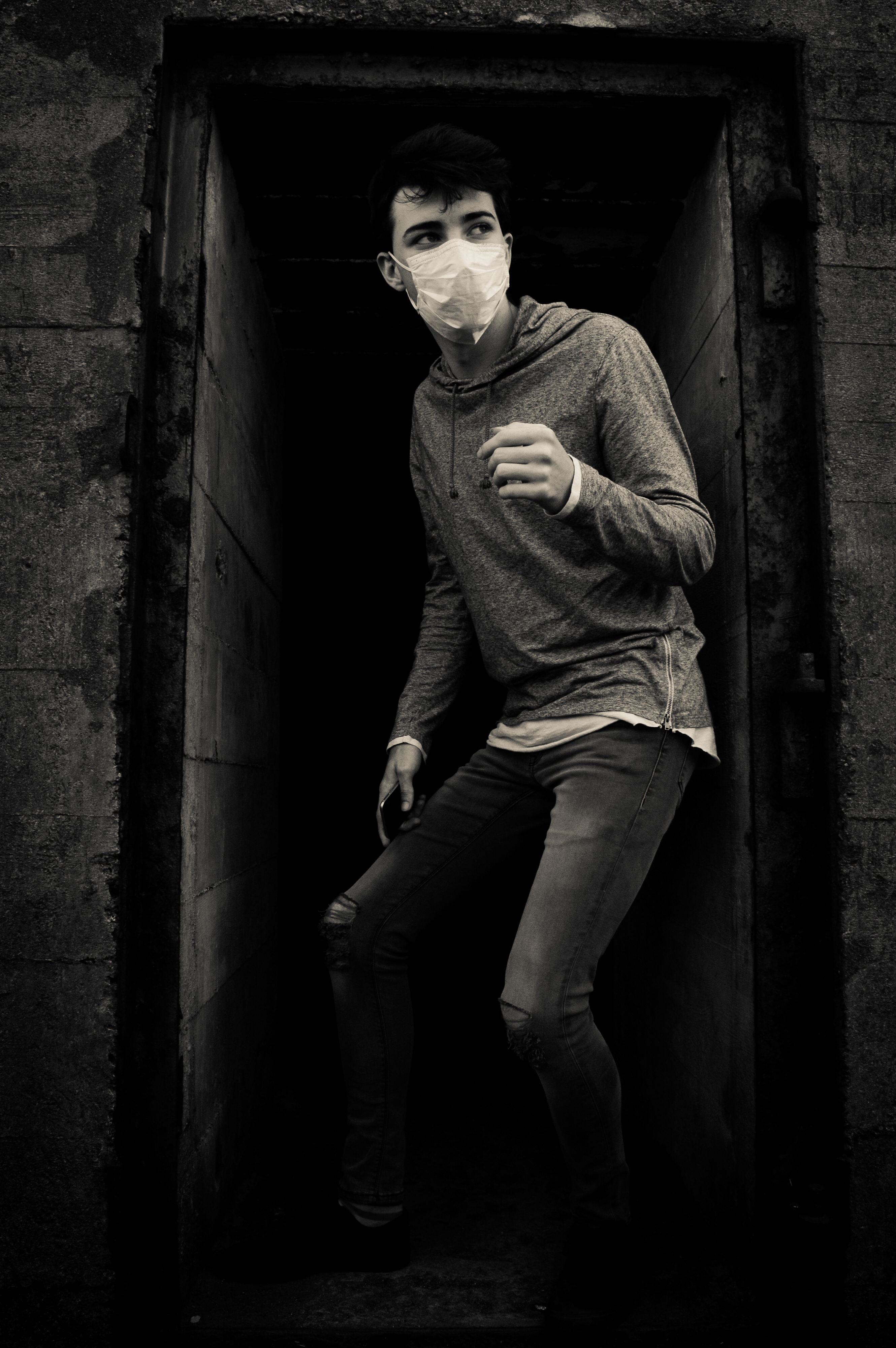
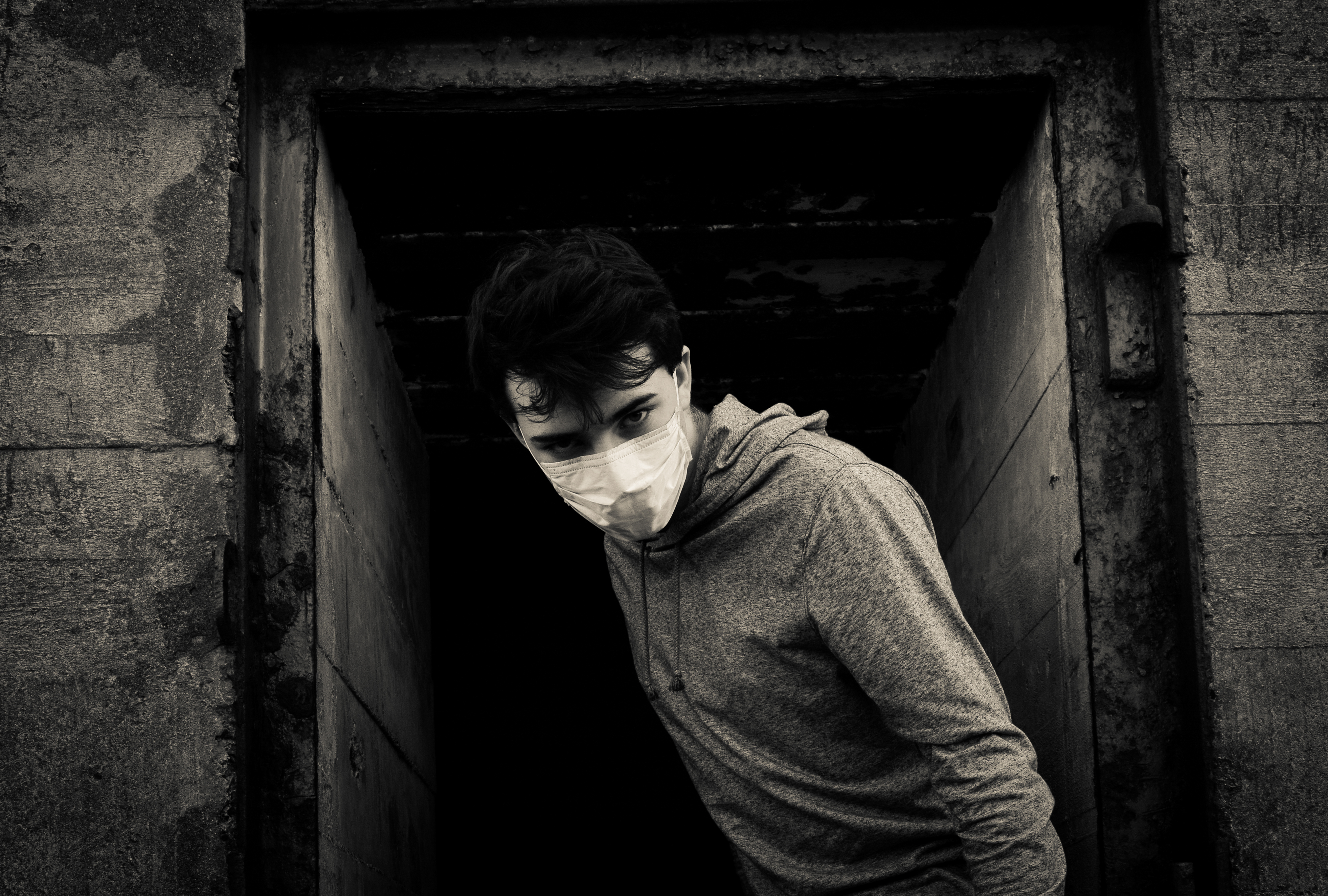

The next part of the shoot was done next to a memorial for navy soldiers who died off the coats of Noimont. This didn’t work out as well as planned as the images look too planned and bland which isn’t what i wanted for my project. This is why they are not in black and white as i do not plan on using them in my book. These images were the least successful of my shoot because they look extremely staged and my model looks to stiff as he is sat very straight against the bench which i think was the wrong pose as it needs to seem more natural or dramatic like the images above. I also feel like the link to war is too direct in these images and does not leave any room for the imagination and the images are very unambiguous which does not fit with the theme of my project. All my images will be ambiguous until fitted into the book then they will become much clearer but still leave room for the imagination of the viewers.
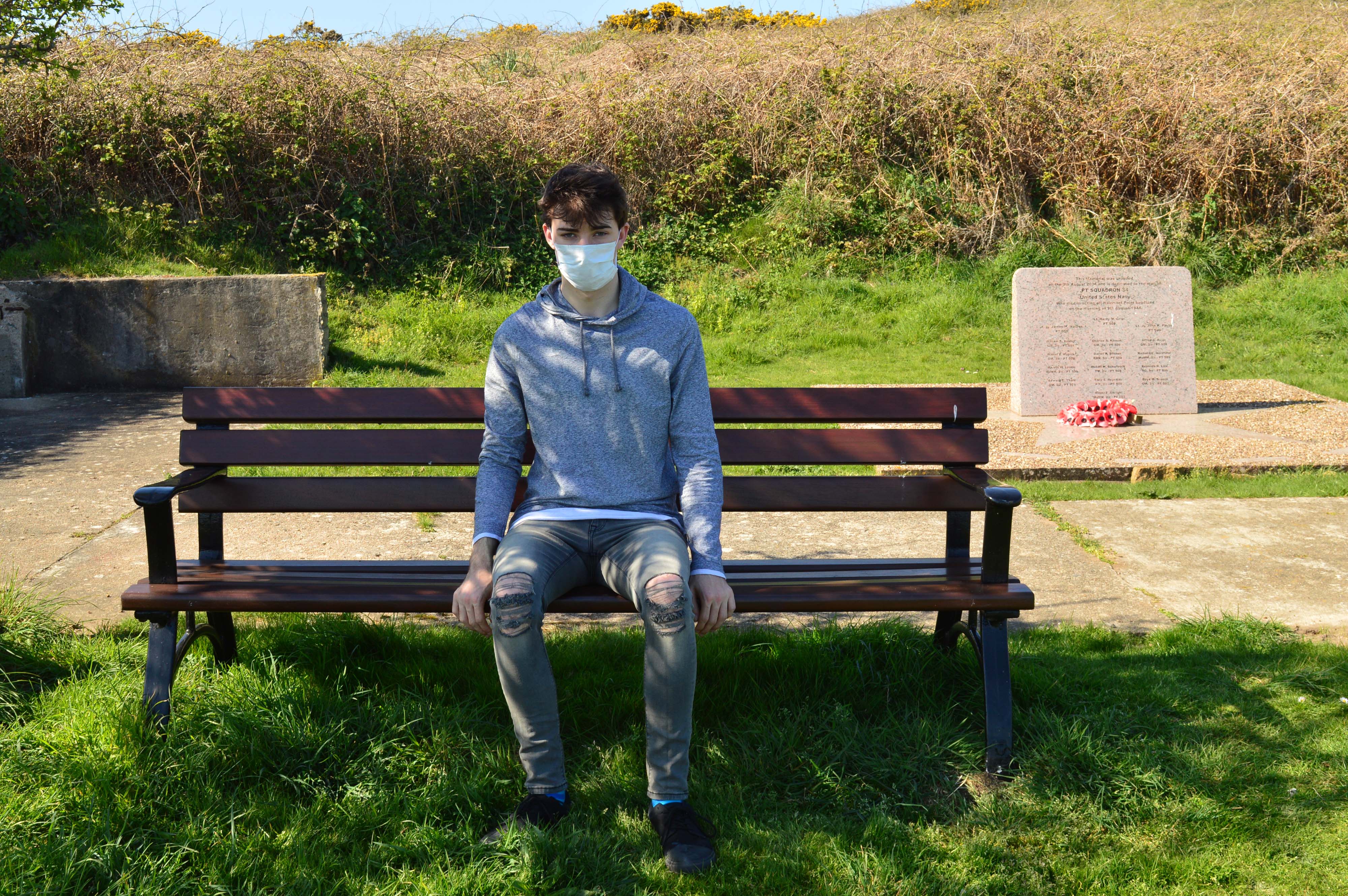

The next part of my shoot was also done on a bench but it was much more successful as it included much more landscape such as the bunkers in the background. The photos appear to be much more natural looking than the ones above which is why i have changed them into black and white as i want to use them in my book. I think these images turned out really well as they are strong in black and white creating a very dramatic image. These images are fairly ambiguous on their own but hopefully they will make more sense if they are placed in my book. The most powerful image out of these two is the second one because of the low angle making my model seem powerful, the image is very strong because we can only see a limited amount of the landscape which adds tension to the image as the viewer will make up what the rest of the landscape will look like. These images symbolize the calm before the storm, the laid back approach that the world is taking to pollution as they do not see it as a serious issue like the war in Afghanistan. They represent the landscape which we have only altered so we can view it, the landscape that we haven’t not destroyed for the “benefit” of Jersey.


For the next part of this shoot i found some metal bars sticking out the wall which was mostly likely used as steps at one time but i thought these would create interesting photos of my model hanging from them and climbing them. The photos turned out really well but the sun was shinning on part of the wall by the bunker which partially ruined the photo as the composition did not look right as the light did not match how dark the area was. These images are a combination of Abstract, tableaux and landscape photography. They are my favourites of my shoot but they could of been greatly improved if the light in the background was not there as this ruins the consistency of the composition of the images. However, in the first image the light works well as a model is in a pose which replicates the angle of the light which makes it much more interesting but the other two images would be much more powerful if the light was not visible, i tried to work around it by photographing my model up close but it did not work. All these images have the same meaning of clinging onto the hope that the world will change, the world will heal itself if we help it like a toddler learning to walk, they simply need help to start with. The pegs in the wall represent the ladder which we need to climb to help the world, the steps are broken, twisted and rusted because the journey will not be easy to fixing the world just like how the war wasn’t easy yet we still managed to do it, so what’s different not?



The last part of my shoot was done underneath a ramp which was most likely used to push the gun up, the light was not shinning directly on my model or me which meant the photos came out fairly dark and sharp which works really well for this project as it is all about how pollution is affecting the world. My model crouched down in front of an opening which i am not sure what it was used for but it worked well to frame my model in the center of the image. The images are very simple but they are lots of meaning behind them in the sense that no amount of hiding behind walls and instead caves will protect you from pollution. No mask will protect you and eventually there will be a memorial with your name on it. Pollution killed 3 million people in 2012, those numbers will only rise with the more cars and buses we put on the roads, the more forests we destroy who suck up all our carbon dioxide and buildings more buildings so that the population which keeps growing will have space to live but actually most of them won’t be able to afford it so the building will be for let for months or years.
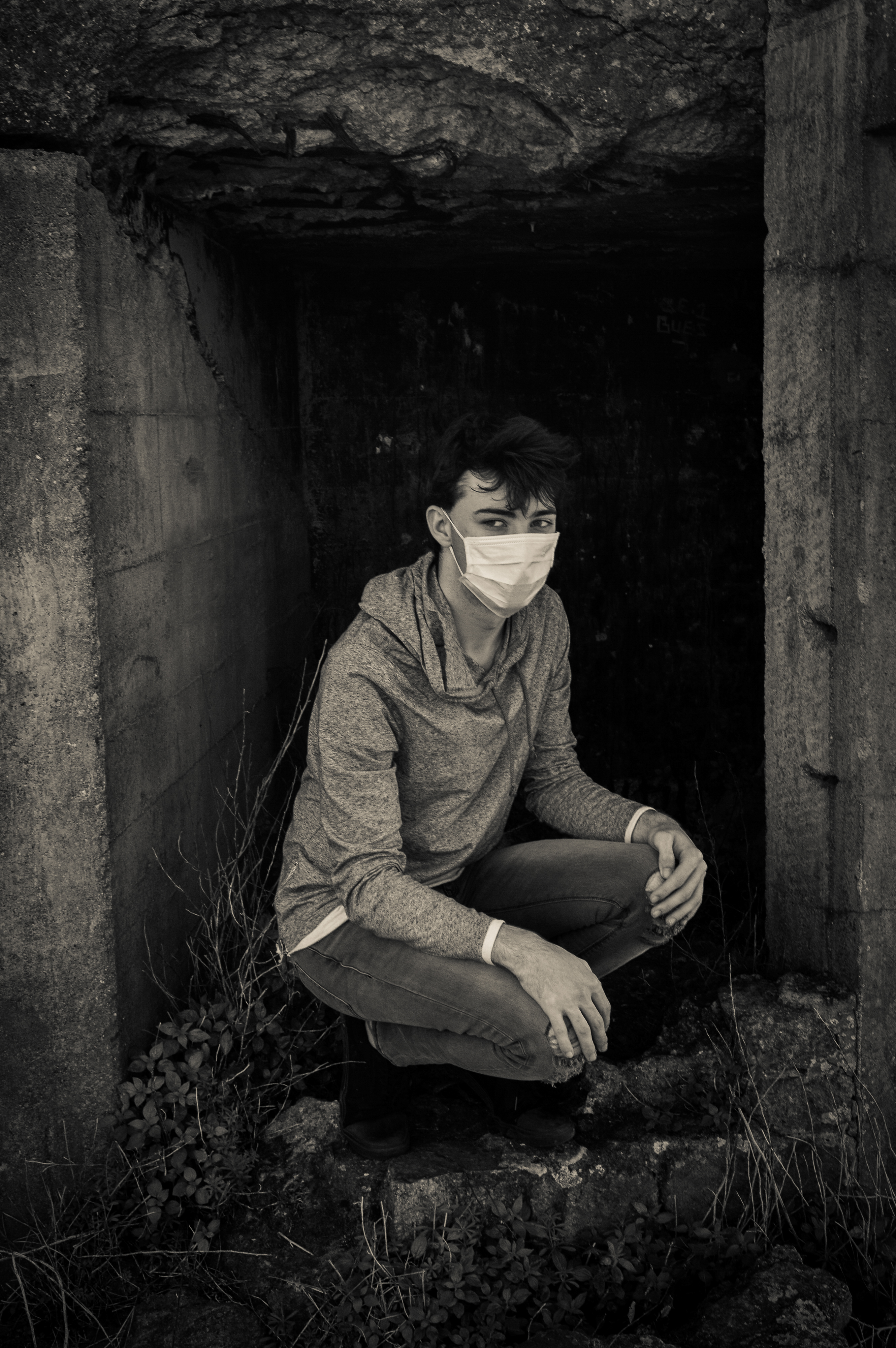









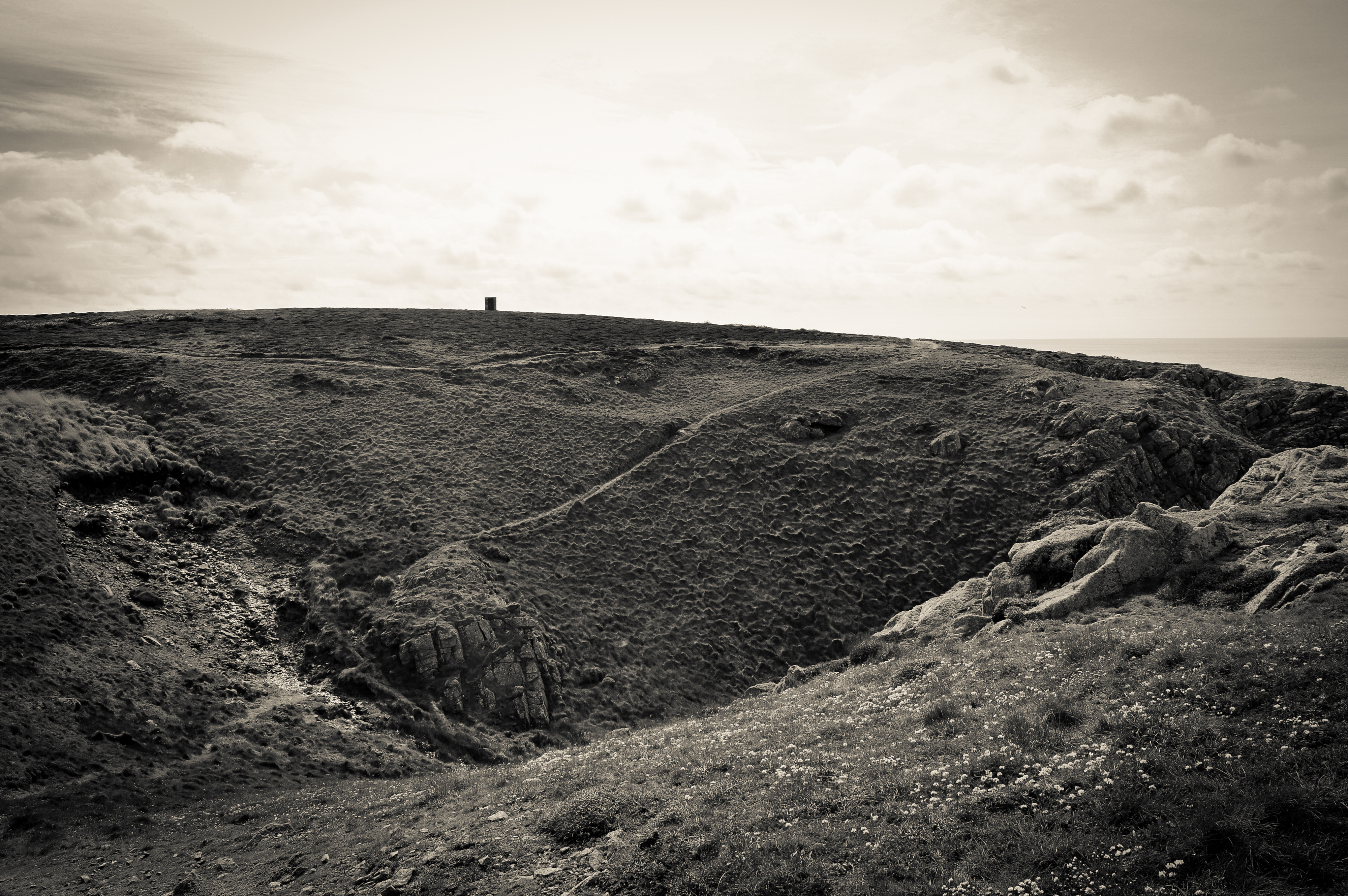
















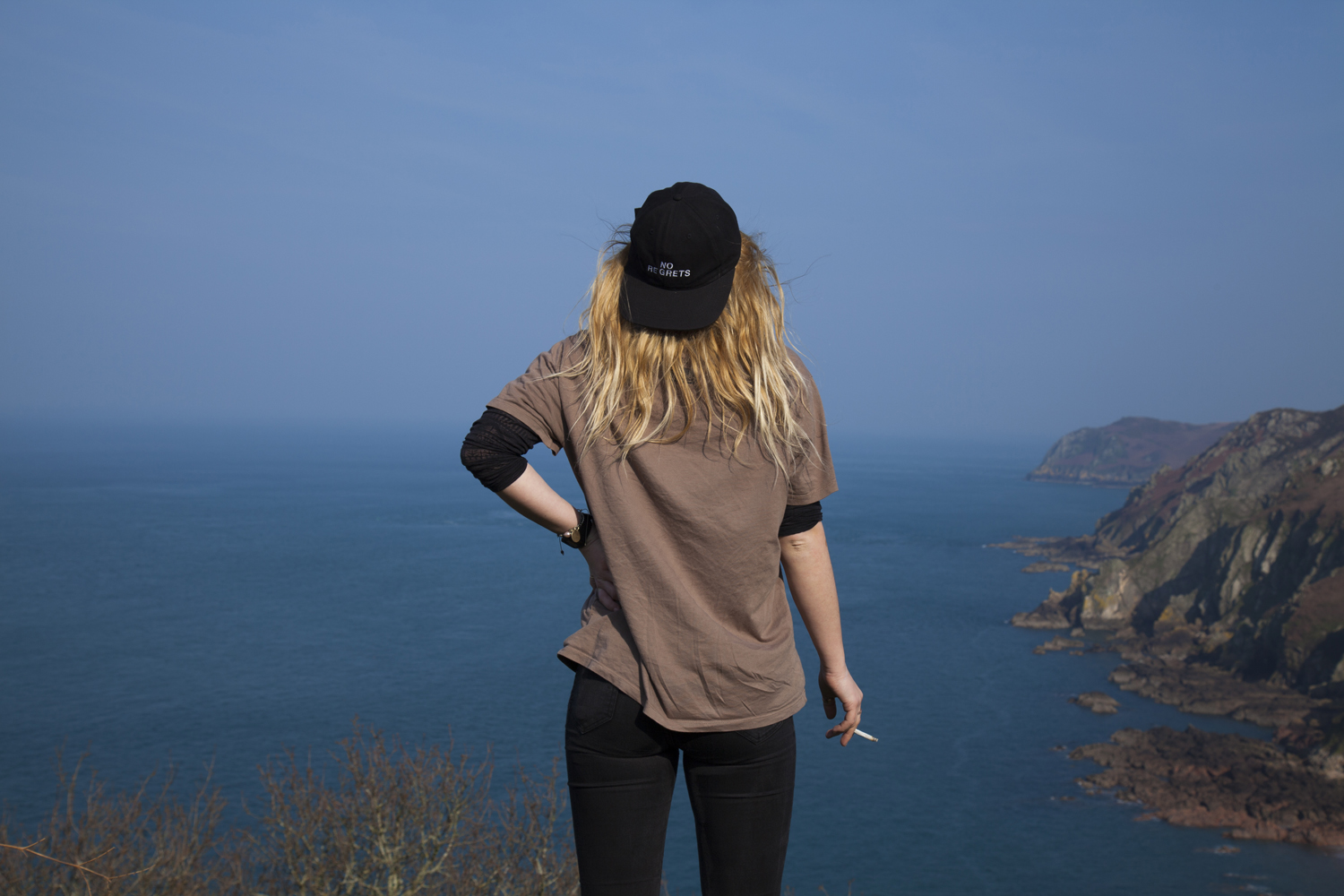
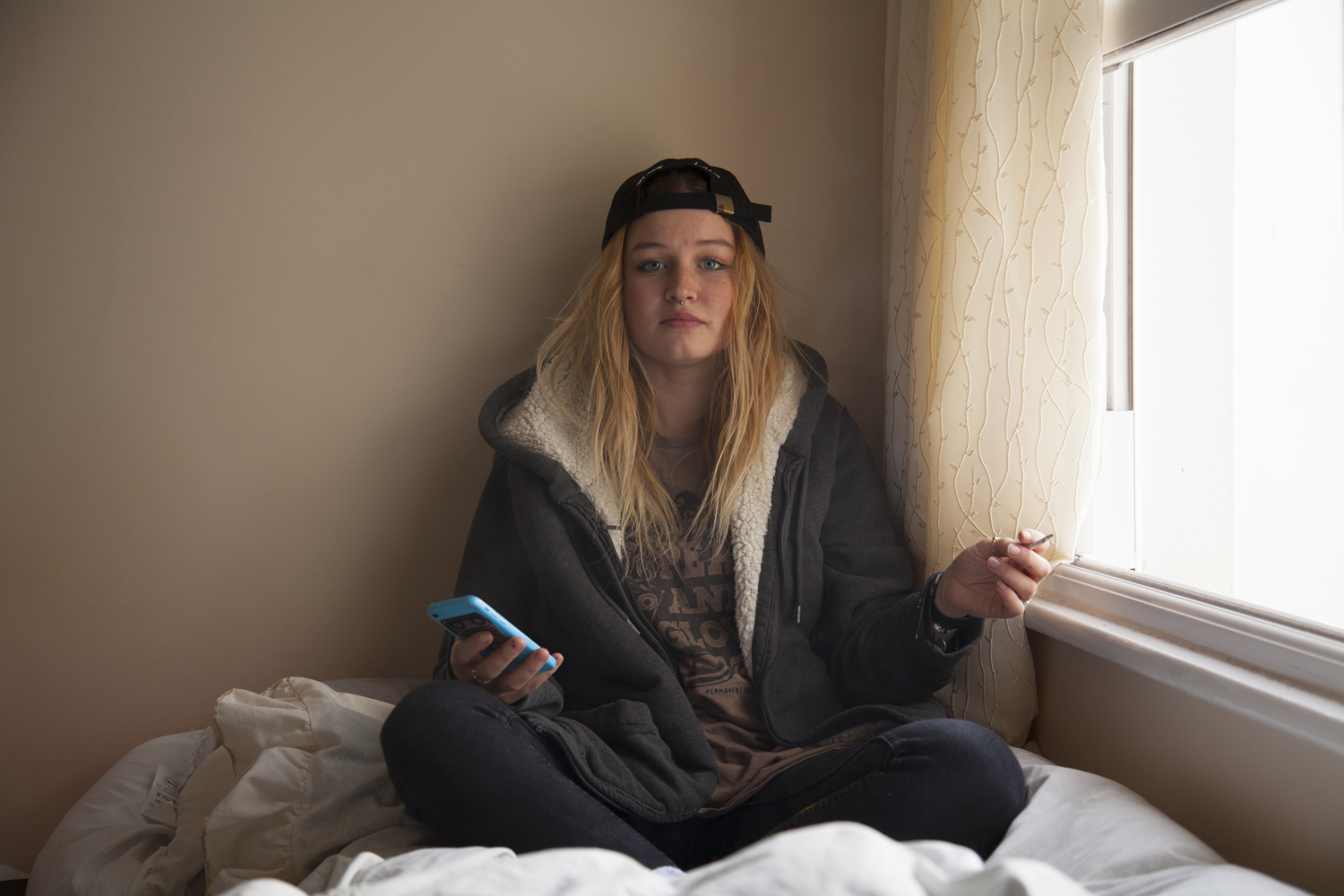




















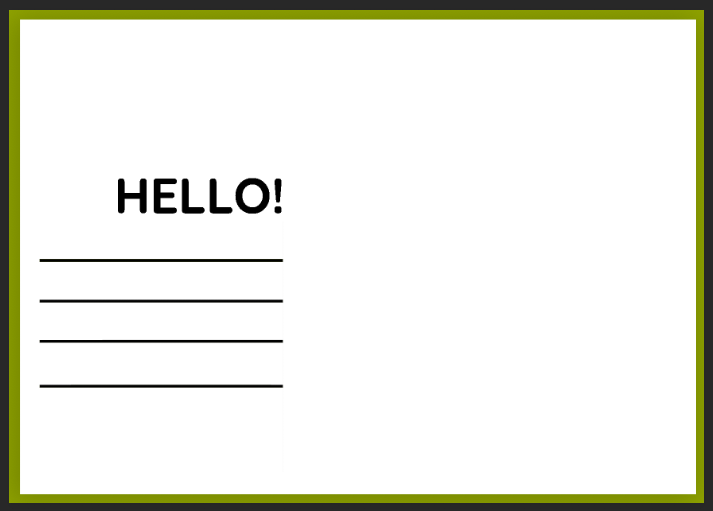



















 The design above shows all of the pages I plan to have featured in my end result. The only definite change I will be making to this layout is to remove my single beach clean-up image, bringing my book down from 60 pages to 58. As well as this, I will be adding in subheadings, messages and facts to the blanks pages and at the start of the book; a second title page and a preface/quote. Although I have mixed up and joined together a lot of my shoots, my book will still be presenting four different sections looking at cigarette waste, plastic pollution, ocean pollution and Jersey’s waste disposal. My first decision for the design of my book was to make all the pages black, emphasising my more symbolic photographs and giving the book an overall dramatic tone. For the layout I have decided to show my journey through exploring the Islands pollution by presenting my themes in the order I completed them. The first and shortest section introduces the dark tone that is displayed throughout my book whilst only showing one style of studio photography. The next two plastic and ocean pollution sections, however, depict an array of symbolic, documentary and abstract images that, together, really do emphasise their meanings. Lastly is my Jersey waste disposal shoot which, like the first section, only shows one type of photography to tell the story. I love the variety of double page spreads, full bleeds, and mirroring techniques I have used throughout this layout and feel as if this book will be an informative and inspiring part of my final pieces.
The design above shows all of the pages I plan to have featured in my end result. The only definite change I will be making to this layout is to remove my single beach clean-up image, bringing my book down from 60 pages to 58. As well as this, I will be adding in subheadings, messages and facts to the blanks pages and at the start of the book; a second title page and a preface/quote. Although I have mixed up and joined together a lot of my shoots, my book will still be presenting four different sections looking at cigarette waste, plastic pollution, ocean pollution and Jersey’s waste disposal. My first decision for the design of my book was to make all the pages black, emphasising my more symbolic photographs and giving the book an overall dramatic tone. For the layout I have decided to show my journey through exploring the Islands pollution by presenting my themes in the order I completed them. The first and shortest section introduces the dark tone that is displayed throughout my book whilst only showing one style of studio photography. The next two plastic and ocean pollution sections, however, depict an array of symbolic, documentary and abstract images that, together, really do emphasise their meanings. Lastly is my Jersey waste disposal shoot which, like the first section, only shows one type of photography to tell the story. I love the variety of double page spreads, full bleeds, and mirroring techniques I have used throughout this layout and feel as if this book will be an informative and inspiring part of my final pieces. My first symbolism presentation above depicts the problem of cigarette waste and represents the message of ‘man vs nature’. These computer generated displays depict how I am intending to display my results in a classic black diptych window mount. Because of the dramatic black background of these pieces, I will be requesting they are printed off size A4 so that they can appear on gloss paper. Although I am fond of my symbolism piece using a human hand as the subject matter, I have found that the more simple mirroring effect of the two flower images looks much more dramatic and stylish. To create this display above I actually had to go back and re-edit these two images in order for both to appear in colour with the same tone and lighting effect. To make the window mount simulation above I used a very thin frame of white background before the black to create the illusion of the black frame having a bevelled edge.
My first symbolism presentation above depicts the problem of cigarette waste and represents the message of ‘man vs nature’. These computer generated displays depict how I am intending to display my results in a classic black diptych window mount. Because of the dramatic black background of these pieces, I will be requesting they are printed off size A4 so that they can appear on gloss paper. Although I am fond of my symbolism piece using a human hand as the subject matter, I have found that the more simple mirroring effect of the two flower images looks much more dramatic and stylish. To create this display above I actually had to go back and re-edit these two images in order for both to appear in colour with the same tone and lighting effect. To make the window mount simulation above I used a very thin frame of white background before the black to create the illusion of the black frame having a bevelled edge. For my next pieces presenting my creative ocean pollution symbolism finals, I will be presenting two sets of diptych images backed onto large white foam boards. Because these will all be A3 prints I originally thought about backing them onto foam board and simply displaying them as four separate pieces. However, because the images are quite similar in colour and subject matter I decided that they are best off displayed together in the hopes that they will compliment one other. I particularly like the two examples on the left together because they are a simple/abstract version of the same jellyfish-like creature. As well as this the fish and wave outcomes also work well together as it is an obvious symbol of ‘under the sea’. To re-create the Photoshop examples I have displayed above I will be first backing them onto black foam board separately (giving them more visual weight) to then arrange them side by side.
For my next pieces presenting my creative ocean pollution symbolism finals, I will be presenting two sets of diptych images backed onto large white foam boards. Because these will all be A3 prints I originally thought about backing them onto foam board and simply displaying them as four separate pieces. However, because the images are quite similar in colour and subject matter I decided that they are best off displayed together in the hopes that they will compliment one other. I particularly like the two examples on the left together because they are a simple/abstract version of the same jellyfish-like creature. As well as this the fish and wave outcomes also work well together as it is an obvious symbol of ‘under the sea’. To re-create the Photoshop examples I have displayed above I will be first backing them onto black foam board separately (giving them more visual weight) to then arrange them side by side. Lastly, for my surreal and abstract outcomes above, taken during my documentary ocean pollution shoot, I have decided to put together my most complicated window mount so far. This presentation will be paired up with my black and white documentary outcomes depicting the pollution I used to create these images. As with those outcomes, these were taken on an iPhone and therefore will also have to be printed off on A5 and A4 gloss paper. The reason I am unsure whether I will be using the five image window mount on the left or the smaller one with four is because I first want to judge the quality of the top abstract piece to see if its good enough to display. When recreating one of these examples I will most likely crop the A5 pieces to the same size in order for them to appear more professional. To create this complicated window mount will take a lot of planning, however, when finished, the end result will accentuate my photographs and present a visually stimulating collection.
Lastly, for my surreal and abstract outcomes above, taken during my documentary ocean pollution shoot, I have decided to put together my most complicated window mount so far. This presentation will be paired up with my black and white documentary outcomes depicting the pollution I used to create these images. As with those outcomes, these were taken on an iPhone and therefore will also have to be printed off on A5 and A4 gloss paper. The reason I am unsure whether I will be using the five image window mount on the left or the smaller one with four is because I first want to judge the quality of the top abstract piece to see if its good enough to display. When recreating one of these examples I will most likely crop the A5 pieces to the same size in order for them to appear more professional. To create this complicated window mount will take a lot of planning, however, when finished, the end result will accentuate my photographs and present a visually stimulating collection.











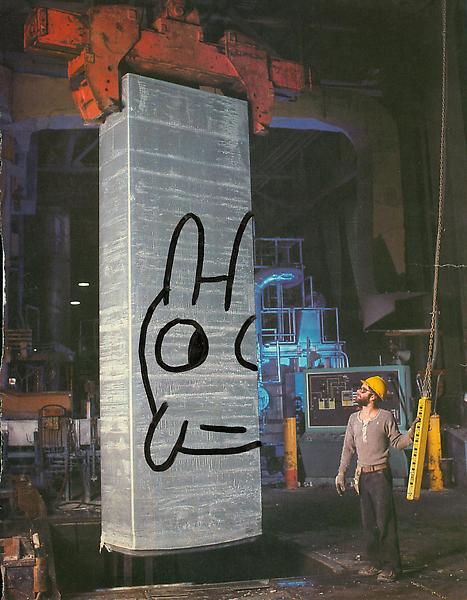


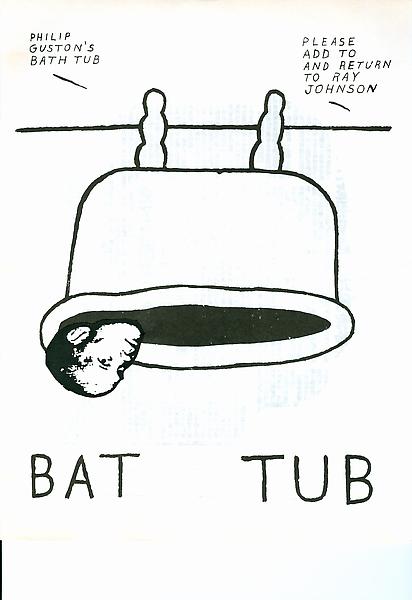

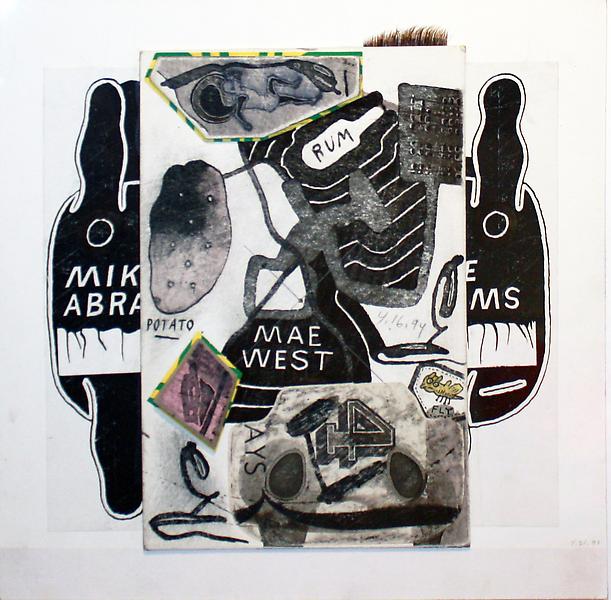


 Below are a series of small tests on my own images. They were printed out on a normal copy printer so are not a high quality and were manually deformed with pens and ink markers.
Below are a series of small tests on my own images. They were printed out on a normal copy printer so are not a high quality and were manually deformed with pens and ink markers. 




